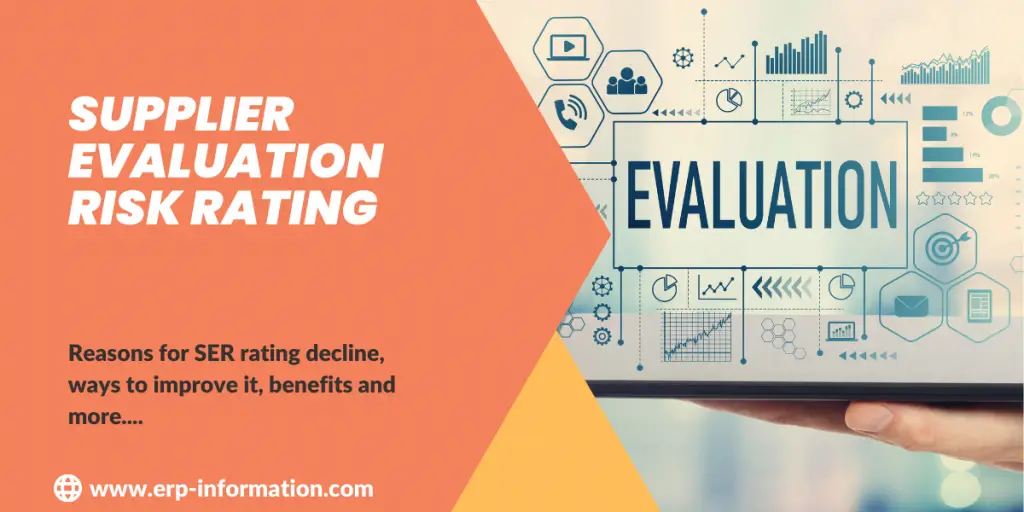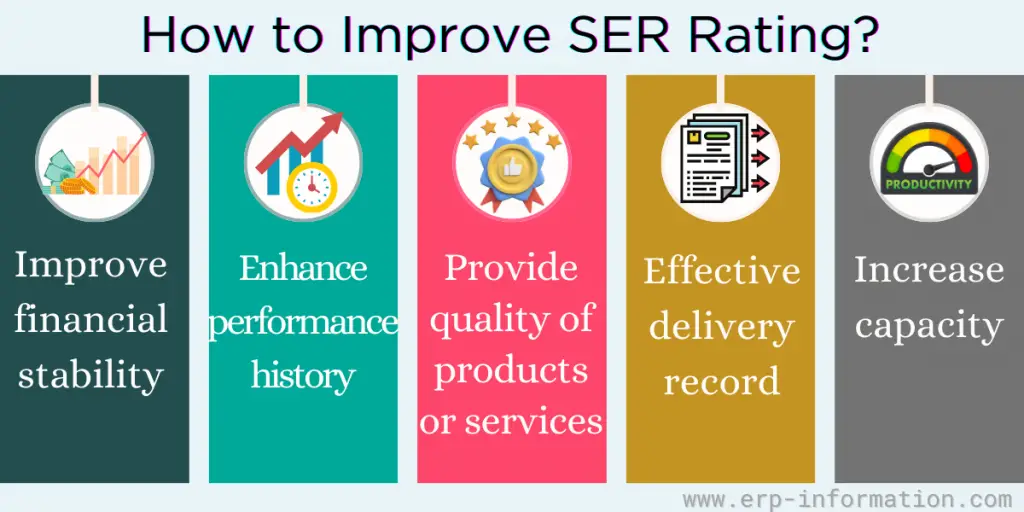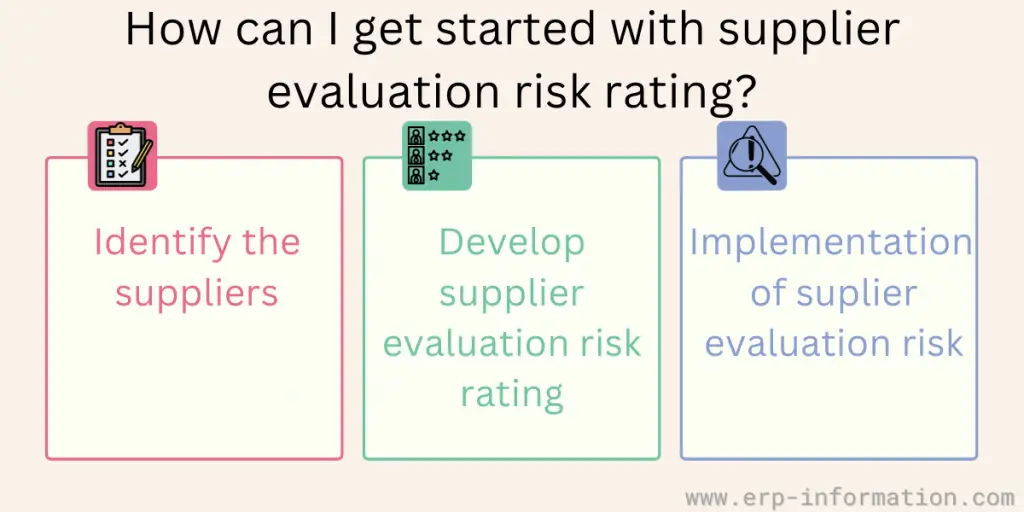In today’s complex and interconnected global business landscape, managing supplier relationships and mitigating risks are paramount for sustained success.
One powerful tool at your disposal is the Supplier Evaluation Risk Rating. This strategic assessment process allows organizations to methodically evaluate their suppliers, unearthing potential vulnerabilities and proactively addressing them.
The importance of SER Rating lies in its ability to serve as a compass, guiding your procurement team through the intricate terrain of supplier relationships.
When your supplier evaluation risk rating declines, it’s essential to understand why and take corrective action.
By assigning a structured rating to each supplier, you can swiftly identify areas of concern, make data-driven decisions, and take corrective action to safeguard your supply chain’s resilience and integrity.
In this article, we will discuss the concept of supplier evaluation risk rating along with its benefits, reasons for SER rating decline, and ways to improve it.
What is supplier evaluation risk rating?
A supplier evaluation risk rating measures a supplier’s potential risks to your business.
SER rating assesses the risk that a supplier won’t be able to supply products as needed due to bankruptcy, going out of business, or otherwise becoming financially unsustainable.
Supplement evaluation aims to identify and quantify the risks associated with a supplier’s ability to meet contractual obligations.
The assessment process consists of four steps:
- Researching the supplier’s financial stability
- Evaluating the supplier’s contractual terms and conditions
- Analyzing the supplier’s performance history
- And conducting a site visit to the supplier’s facility
After completing the assessment process, a decision is made as to whether or not to continue doing business with the supplier.
Supplier evaluations are necessary because they help companies avoid doing business with suppliers at a high risk of defaulting on their obligations. That can save companies considerable money and aggravation in the long run.
Why might a supplier evaluation risk rating decline?
Here are the reasons.
Financial stability
A supplier’s financial stability is significant in the SER rating. If a supplier is not financially stable, they may be less able to meet your needs or fulfill their contractual obligations.
History of performance
A supplier’s performance history is another important factor in SER rating. If a supplier has a history of poor performance, they may be more likely to fail to meet your expectations.
Quality of products or services
The quality of a supplier’s products or services is the next important factor in evaluating supplier risk. If a supplier’s products or services are not of high quality, they may not be able to meet your needs.
Delivery record
A supplier’s delivery record is also crucial when rating supplier evaluation risk. If a supplier has a history of late or poor-quality deliveries, they may be more likely to fail to meet your expectations.
Capacity
A supplier’s capacity is another important factor. If a supplier cannot meet your needs, they may not be able to fulfill their contractual obligations.
How to improve supplier evaluation risk rating?
There are several ways to improve the SER rating.
- Improve financial stability: Suppliers can improve financial stability by ensuring strong financial controls and diversifying their supplier base.
- Enhance performance history: Suppliers can enhance their performance history by ensuring that they have a robust system for tracking and measuring supplier performance.
- Provide quality of products or services: Suppliers can provide a better quality of your products or services by ensuring strict quality control measures.
- Adequate delivery record: They can improve their delivery record by ensuring a robust system for tracking and measuring supplier performance.
- Increase capacity: Suppliers can increase their capacity by ensuring they have the necessary resources to meet their needs.
What are the benefits of SER rating?
- It can help you identify potential risks posed by suppliers.
- You can use it to mitigate the risks posed by suppliers.
- It can help you improve your overall supply chain management.
- It can help you improve your bottom line.
How can I get started with the SER rating?
If you are interested in getting started with the SER rating, there are a few things you need to do.
- First, you must identify the suppliers that pose the most significant risk to your business. That is done by conducting a supplier risk assessment.
- You need to develop an SER rating system next. This system should consider the factors that contribute to supplier risk.
- Then, you need to implement your supplier evaluation risk rating system and monitor your suppliers on an ongoing basis.
By following these steps, you can develop a robust SER rating system that will help you mitigate the risks posed by your suppliers.
FAQs
What is Dun & Bradstreet?
Dun & Bradstreet is a credit bureau that collects and sells business data. It contains commercial data on 240 million plus companies.
The company collects business data from various sources, including public records, surveys, and payment history. It then sells this data to creditors, insurers, and other businesses that need it to decide whether or not to do business with a given company.
The company was founded in 1841 by Lewis Tappan to help American merchants. In 1933, John M. Bradstreet and R.gl Dun merged their companies and formed Dun & Bradstreet.
What is the SER score?
The Supplier Evaluation Risk Score (SER) is a metric that helps evaluate the risk of working with a particular supplier.
It measures the likelihood that the supplier will fail to meet requirements, such as quality control or contract compliance.
In addition, the SER score considers price, delivery time, past performance, and other criteria. Knowing this information can help organizations make informed decisions when selecting suppliers and minimize the risk of working with unreliable providers.
Regular Evaluation of suppliers regularly can also help companies stay up-to-date on trends and changing industry conditions.
How are compliance and regulatory factors considered in supplier evaluation risk rating?
Compliance is assessed by checking whether a supplier complies with local, national, and international regulations and standards related to their industry, such as safety standards, environmental regulations, and labor laws.
What is environmental responsibility in supplier evaluation risk rating?
Environmental responsibility evaluates a supplier’s efforts to minimize their environmental impact. This may include assessing their sustainability initiatives, waste management practices, and adherence to environmental laws.
Are ethical considerations important in supplier evaluation risk rating?
Yes, ethical considerations are important. This includes evaluating a supplier’s adherence to ethical business practices, such as anti-corruption, anti-bribery, and fair labor practices.
Conclusion
In conclusion, supplier evaluation risk rating is an essential factor to consider when selecting a supplier. Several factors contribute to supplier evaluation risk rating, and it is vital to view all of these factors when making a decision.
By taking the time to understand it, you can ensure that you are selecting a supplier that poses the least risk to your business.


